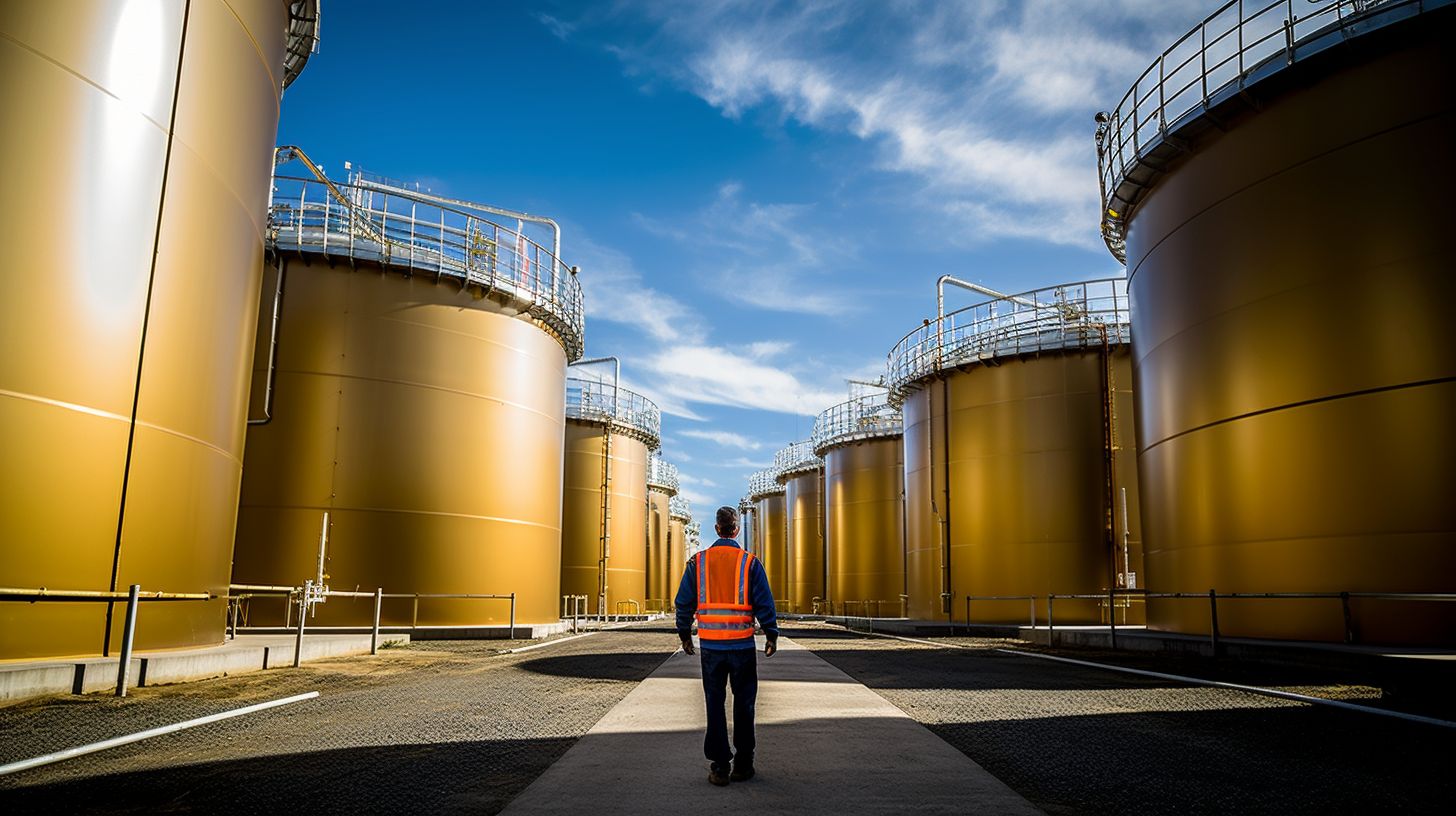
Choosing the proper commercial steel tanks can seem overwhelming when safely storing chemicals, fuels, or other hazardous materials. Businesses face the challenge of selecting tanks that are not only cost-effective but also compliant with stringent industry regulations and safety standards.
It’s a critical decision – one wrong move could lead to environmental hazards and financial losses.
Tank material compatibility is essential; for example, certain substances like sulfuric acid demand specific types of containers to prevent dangerous reactions. This guide will navigate you through the maze of options available, breaking down everything from regulatory compliance to the nuts and bolts of capacity and chemical compatibility.
With all our product’s expert advice, you’ll be equipped to make an informed purchase that safeguards your business operations.
Contact Extreme Industrial Coatings today for commercial steel tanks and repairs across California.
Get ready for clarity on commercial steel tanks!
Key Takeaways
- Commercial steel tanks must meet strict safety and regulatory standards to store hazardous materials like chemicals and fuels safely.
- Essential factors in choosing the right tank include chemical compatibility, capacity, volume, material handling, safety features, and budget considerations.
- Tanks vary in types, such as Aboveground Storage Tanks (ASTs), Underground Storage Tanks (USTs), Double-Walled Tanks, Stainless Steel Tanks, Polyethylene Tanks, Fiberglass Reinforced Plastic (FRP) tanks, High-Pressure Tanks, Intermediate Bulk Containers (IBCs), each designed for specific storage needs.
- Deciding between renting vs. buying depends on factors like initial investment costs and flexibility for storage solutions according to changing needs or long-term requirements.
- Safety features of commercial steel tanks are critical; they include double walls for spill prevention relief valves for emergency pressure release level monitoring systems to prevent overfilling corrosion-resistant coatings.
Understanding the Regulations for Commercial Steel Tanks

Moving from the basics, exploring the rules governing commercial steel tanks is critical. These regulations are designed with public safety and environmental protection in mind.
They ensure that tanks storing hazardous compounds like flammable solvents, corrosive acids, or toxic chemicals do their job without harming people or nature. Governing bodies set strict standards for building, maintaining, and inspecting these tanks.
Manufacturers and users alike must follow guidelines that dictate tank design features, such as double walls for spill prevention and secondary containment systems to manage leaks. These specifications help contain any potential releases of harmful substances; such cases get into the surrounding environment.
Inspections by certified professionals are mandatory regularly to check for signs of wear or corrosion, which could lead to equipment damage or health hazards if left unaddressed.
It’s not just about meeting legal requirements; adhering to these industry standards is crucial to maintaining safe storage systems for all kinds of materials – whether it’s water storage, liquefied natural gas (LNG), crude oil, or industrial chemicals.
Types of Commercial Steel Tanks
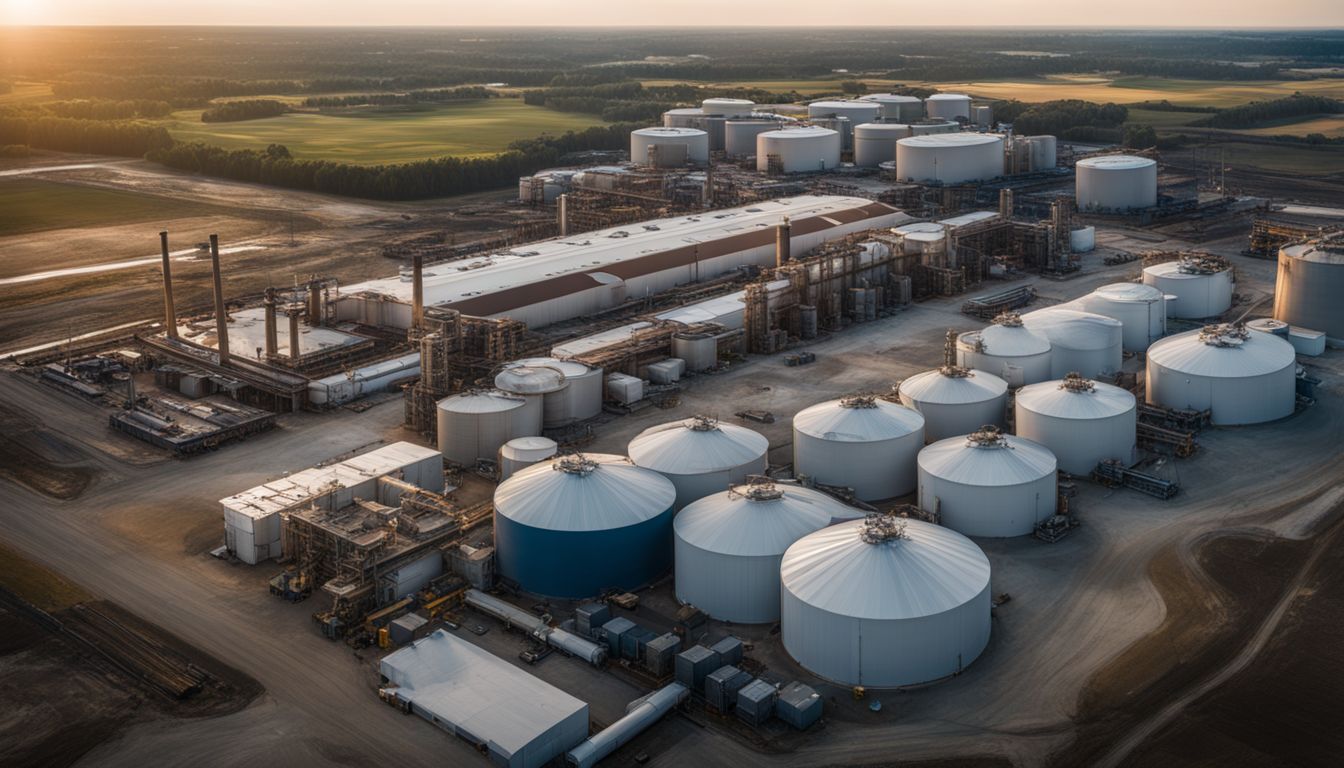
Navigating the regulations for commercial steel tanks paves the way to exploring the variety of common types of tanks available. Each type is designed to meet specific industrial demands, ensuring safe and effective chemical storage.
- Aboveground Storage Tanks (ASTs) are a popular choice for commercial use, often found in refineries and manufacturing plants. They provide ease of access for inspection and maintenance, come in various sizes, and can store a wide range of chemicals, including petroleum products and industrial lubricants.
- Underground Storage Tanks (USTs) offer an alternative when space or safety concerns preclude aboveground options. These are typically used to store substances like gasoline and diesel fuel, safeguarding against fire risks while maximizing space efficiency.
- Double-walled – Tanks feature an extra layer of protection against leaks, with an outer shell that can contain spills from the inner tank. This design enhances environmental safety by preventing chemical seepage into the surrounding area.
- Stainless Steel Tanks boast exceptional corrosion resistance, making them suitable for storing corrosive chemicals such as acids, bases, and caustic solutions without deteriorating over time.
- Polyethylene Tanks are renowned for their cost-efficiency and flexibility. They’re especially favored for handling lower-risk liquids due to their lighter weight and resistance to cracking under pressure.
- Fiberglass Reinforced Plastic (FRP) Tanks combine durability with resistance to corrosion from harsh chemicals. FRP tanks are often selected when aggressively storing chemicals known to corrode metal alloys.
- High-pressure tanks cater to specialized needs requiring the containment of gases or liquids at significantly higher pressures than typical storage scenarios. Their robust construction ensures they can safely handle the demands of high-pressure substances like propane or nitrogen.
- Intermediate Bulk Containers (IBCs) are a versatile option for transporting and storing various fluids. These containers are easy to move using standard pallet jacks or forklifts, providing flexibility in usage and placement.
Factors to Consider when Buying Commercial Steel Tanks
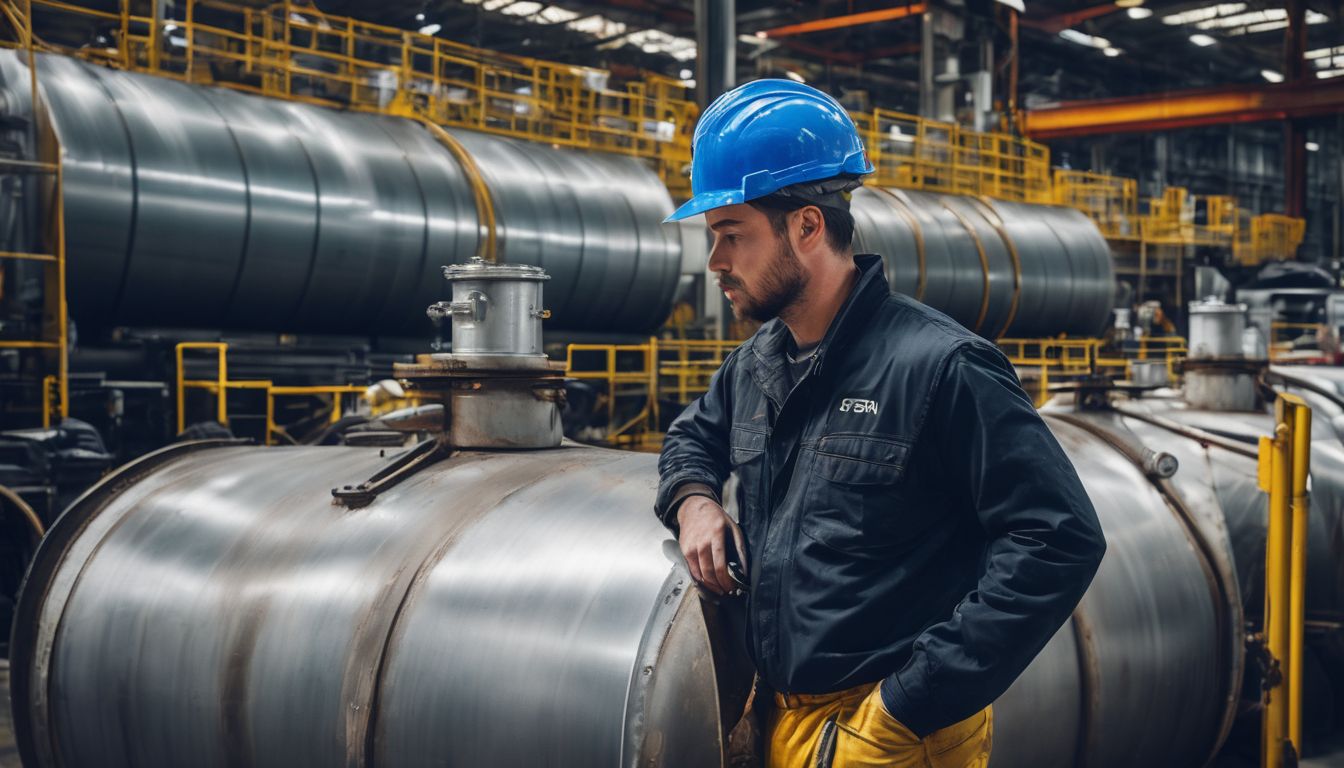
When purchasing commercial steel tanks, it is crucial to consider factors such as chemical compatibility, capacity and volume, material handling and storage system safety features, and budget considerations.
Read the complete buyer’s guide to learn about these important factors in buying commercial steel tanks.
Chemical Storage Tank Compatibility
Selecting the right commercial steel tank involves ensuring the materials are compatible with the chemicals you plan to store. This is not just a safety concern; it’s crucial for maintaining the integrity of both your chemicals and storage tanks.
For instance, hydrochloric acid needs containers resistant to corrosion, while sodium hypochlorite demands a tank material or other chemicals that won’t degrade when exposed to this chemical.
Consider reactivity, flammability, and toxicity when choosing your tank. A substance like caustic soda requires a different handling approach than combustible liquids or gases.
You’ll want tanks made from linear polyethylene or fiberglass-reinforced plastic if dealing with aggressive acids and bases like H2SO4 (sulfuric acid) or HNO3 (nitric acid).
Tanks should have features such as relief valves and corrosion-resistant gaskets to handle high-pressure scenarios safely. Ensuring proper material compatibility extends the life of your storage solutions, and the manufacturing process contributes to safer working conditions.
Capacity and Volume
While ensuring your commercial steel tanks are compatible with the chemicals they’ll store, it’s also critical to consider their capacity and volume. Properly assessing how much space you need considers today’s requirements to store chemicals and anticipates future growth.
Opting for a tank that matches your expected usage can lead to cost-efficient operations and reduced refill frequency, contributing to a smoother manufacturing process.
Tanks come in various sizes; larger tanks may seem more expensive upfront, but they often prove more budget-friendly in the long run due to fewer required refills. It’s essential to evaluate this aspect thoroughly since chemical storage tank needs might increase as your business grows, influencing factors like workplace safety and environmental protection.
Keeping high-volume liquids such as coolants, ammonia, or hot water demands careful planning of both capacity and volume for efficient chemical handling and storage solutions.
Material Handling and Safety Features
Commercial steel tanks require robust material handling and safety features to secure the storage of hazardous substances. Double walls offer added protection, while emergency relief valves and level monitoring are crucial for preventing overfilling and pressure build-up.
Proper installation helps prevent leaks and accidents, with spill management being a critical consideration.
Material compatibility is essential for safe handling, as stored chemicals and hazardous compounds must not react with the tank materials. Adhering to industry standards and regulations ensures compliance with best practices for storing hazardous substances.
Budget Considerations
Budget considerations are crucial when purchasing commercial steel tanks. The cost will be influenced by the tank size, material, new versus used options, additional features, and installation expenses.
Tank capacity and volume also play a vital role in determining overall costs due to their impact on refill frequency and future growth expectations.
It’s essential to weigh these factors when purchasing commercial steel tanks carefully. Proper budget considerations ensure that you make an informed decision that aligns with your needs while managing costs effectively.
Renting Vs. Buying Commercial Steel Tanks
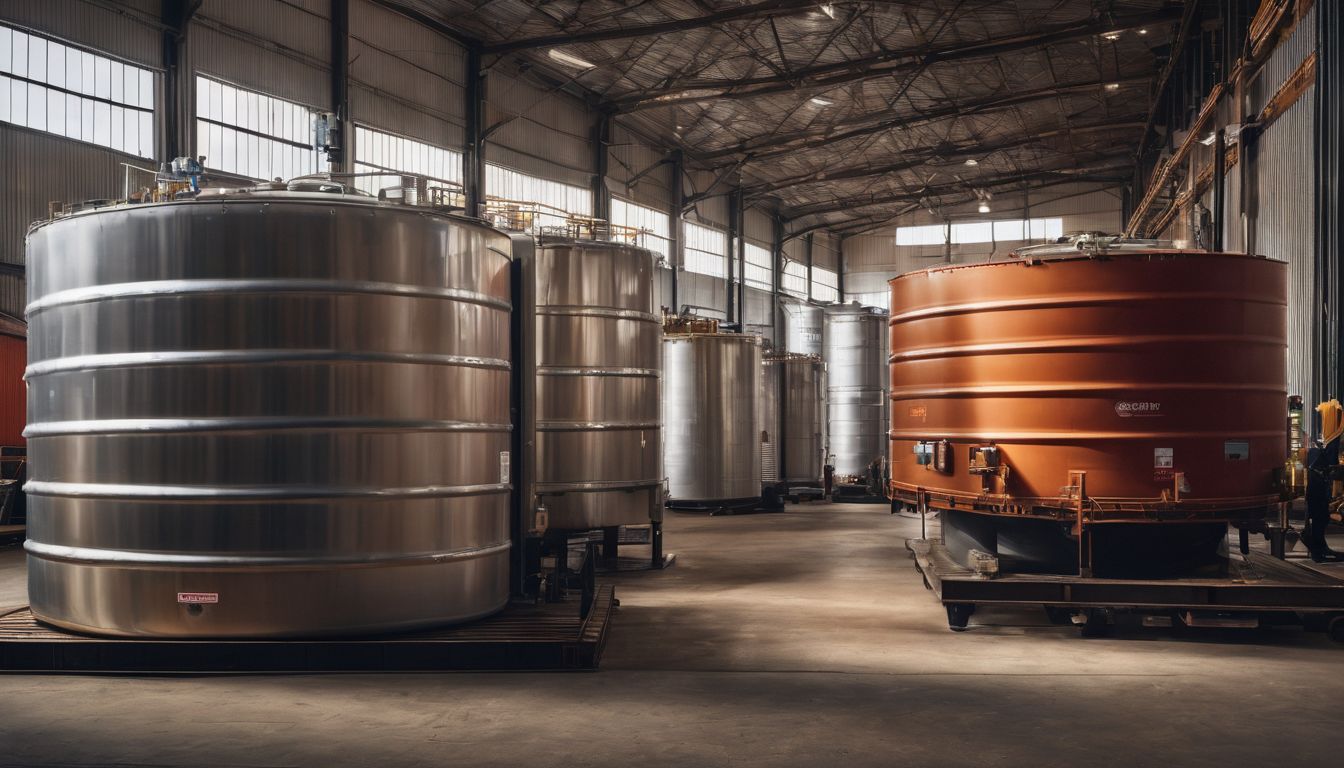
Deciding between renting and buying commercial steel tanks is pivotal for companies managing storage needs. Below is a comparative analysis presented in an HTML table format.
| Aspect | Renting Commercial Steel Tanks | Buying Commercial Steel Tanks |
| Initial Investment | Lower upfront costs without the necessity for capital investment. | Higher initial expenditure but offers long-term asset ownership. |
| Flexibility | Offers adaptability to changing storage needs and avoids obsolescence. | Less flexible but can be customized to specific requirements. |
| Maintenance Responsibility | Typically covered by the rental company, reducing the lessee’s workload. | Owner is responsible for maintenance, allowing for more control over upkeep. |
| Duration of Need | Ideal for short-term or variable-duration projects. | Better suited for long-term usage with predictable storage requirements. |
| Cost Over Time | May incur higher costs in the long run for ongoing rental fees. | Potential for lower total cost of ownership if used extensively over time. |
| Availability | Dependent on the rental company’s stock and may face availability issues. | Ensures availability whenever needed, without reliance on a third party. |
| Customization | Limited options for modifications to meet specific needs. | Can be tailored precisely to the user’s specifications. |
| Financial Considerations | Ongoing operating expense without equity buildup. | Asset purchases can provide tax benefits such as depreciation. |
| Logistics | Responsibility for return logistics lies with the lessee. | Requires space for storage but removes return logistics considerations. |
Role of Commercial Steel Tanks in Productivity Enhancement
When considering the role of commercial steel tanks in productivity enhancement, it’s essential to recognize their contribution to safe and efficient chemical storage. These industrial chemical storage tanks allow organizations to streamline operations and meet safety guidelines by providing a cost-effective and convenient solution for long-term chemical storage.
With capacities exceeding 5,000 gallons, industrial chemical tanks reduce contamination risks and contribute to a safer work environment by protecting workers from toxic fumes, acid burns, and other health hazards.
Centralizing chemical storage within a plant further supports efficient production chain management, ultimately enhancing overall productivity.
Large chemical storage tanks are recognized for offering better returns in terms of storage price per gallon of material. This cost-effective solution saves time and reduces expenses related to intermediate bulk container (IBC) usage.
Additionally, commercial steel tanks play a crucial role in improving safety measures while promoting enhanced efficiency across various industries.
Safety Features of Commercial Steel Chemical Storage Tanks
Commercial steel tanks come equipped with multiple safety features to protect the stored contents of the storage tank and the surrounding environment. Some key safety features include:
- Double walls provide an extra layer of protection, reducing the risk of leaks or spills.
- Emergency relief valves release excess pressure, preventing potential tank ruptures.
- Level monitoring systems help prevent overfilling or underfilling, ensuring safe operation and preventing potential hazards.
- Corrosion-resistant coatings on the interior help maintain the tank’s integrity and protect against chemical reactions.
What are the Warning Signs on a Commercial Steel Tank?
Warning signs on a commercial steel tank are crucial for safety and compliance. These signs must display symbols for health hazards, flammability, irritants, high-pressure gases, corrosion, explosives, oxidizers, acute toxicity risks, and environmental hazards to ensure that anyone working with or around the commercial steel tanks a complete buyer’s guide or tank is aware of potential dangers.
In addition to symbols on the tank itself, it’s essential to use the NFPA color-coding system for classifying chemical storage tanks: red indicates flammability, yellow denotes reactivity, blue signifies health concerns, and white depicts contact hazards.
Displayed warning signs allow personnel to quickly identify potential risks associated with the contents of a commercial steel tank at a glance. This helps employees adhere to safety protocols within their work environment while handling chemicals or operating near these chemical tanks.
How is the Quality of a Commercial Steel Tank Tested?
The quality of a commercial steel tank is rigorously tested to ensure safety and reliability. Hydrostatic testing involves pressuring the tank with water to check for leaks and structural integrity, a crucial step in quality assessment.
Visual inspection plays a significant role in identifying defects or irregularities in the tank’s surface or welding. Additionally, non-destructive methods like ultrasonic and magnetic particle testing are employed to detect any hidden flaws or weaknesses in the steel tank.
These comprehensive evaluation processes guarantee that the commercial steel tanks meet the high-quality standards necessary for industrial use.
The testing procedures for commercial steel tanks involve thorough assessments such as hydrostatic tests, visual inspections, and non-destructive testing methods involving ultrasonic and magnetic particle techniques.
Conclusion
When purchasing commercial steel tanks, it’s crucial to consider factors like chemical compatibility, capacity, and safety features. Understanding regulations and adhering to industry standards is essential for safely storing hazardous substances.
Whether you’re renting or buying, these tanks play a significant role in productivity enhancement and safety assurance. By following this buyer’s guide, you can make well-informed decisions regarding the type of tank that suits your specific needs.
With careful consideration of the key factors discussed in this guide, you can ensure cost-efficient and reliable chemical handling and storage solutions for your business operations.
Contact Extreme Industrial Coatings today for 20+ commercial construction services we offer across California.


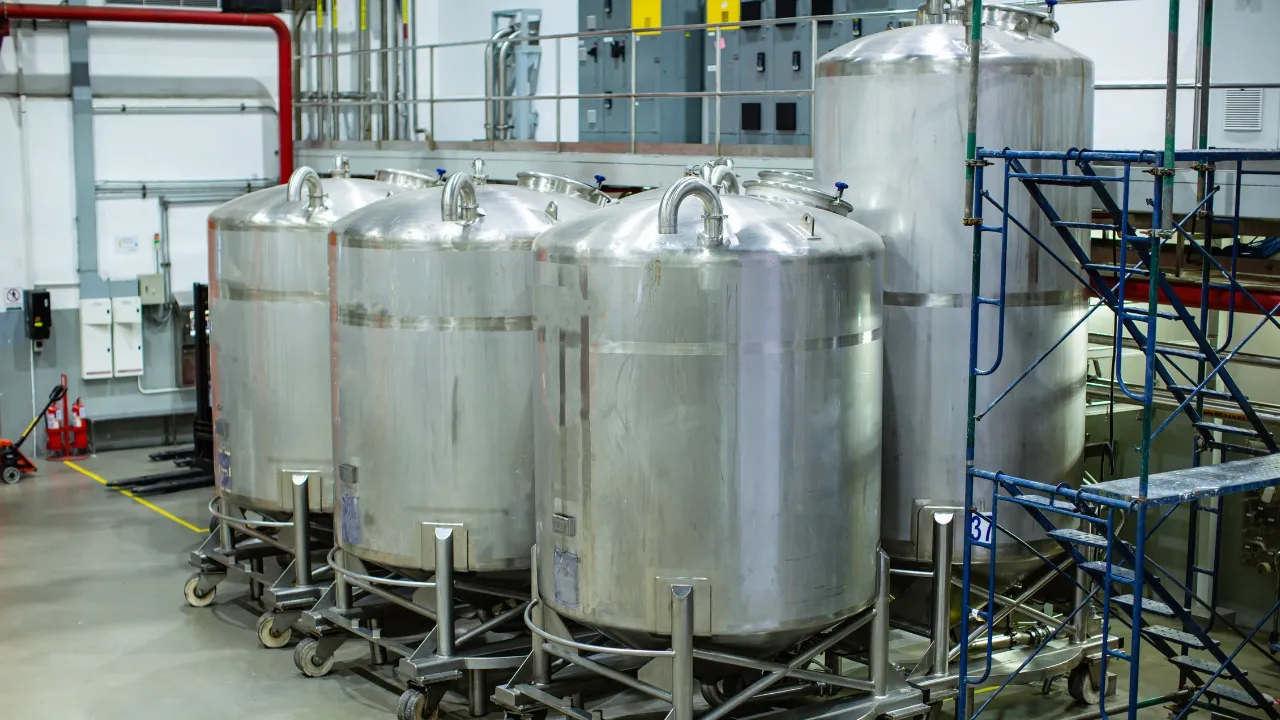
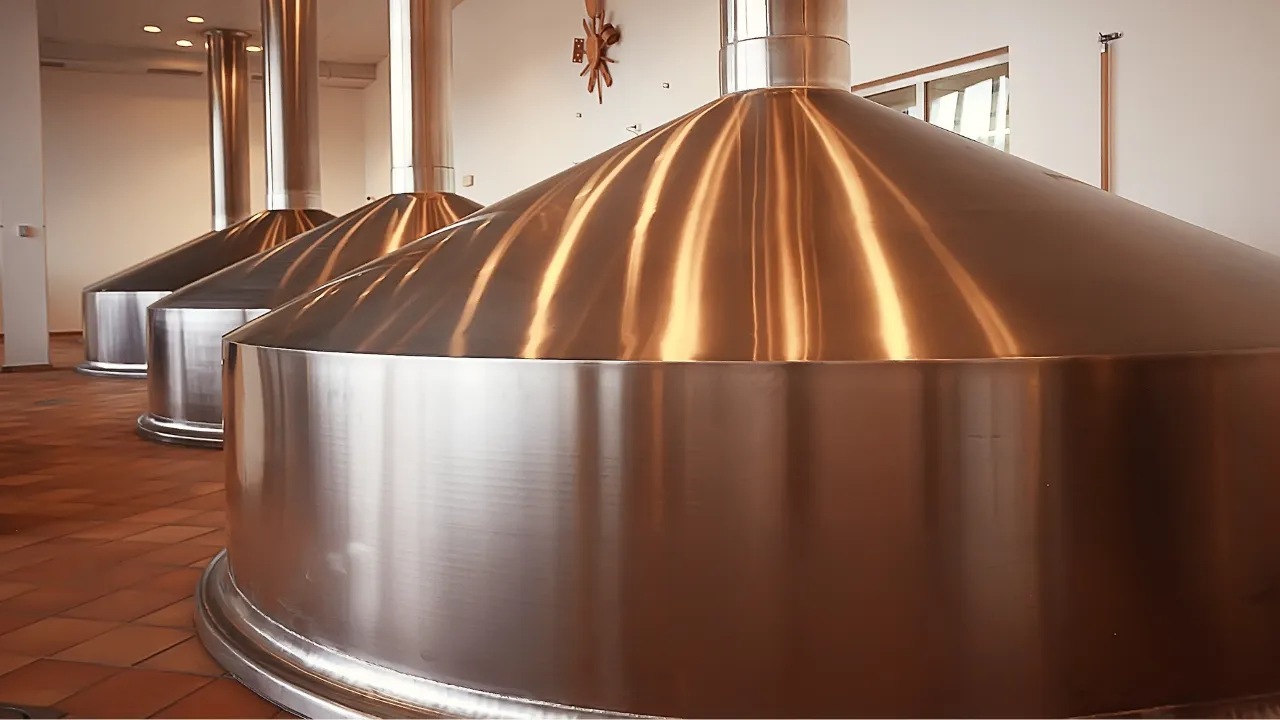
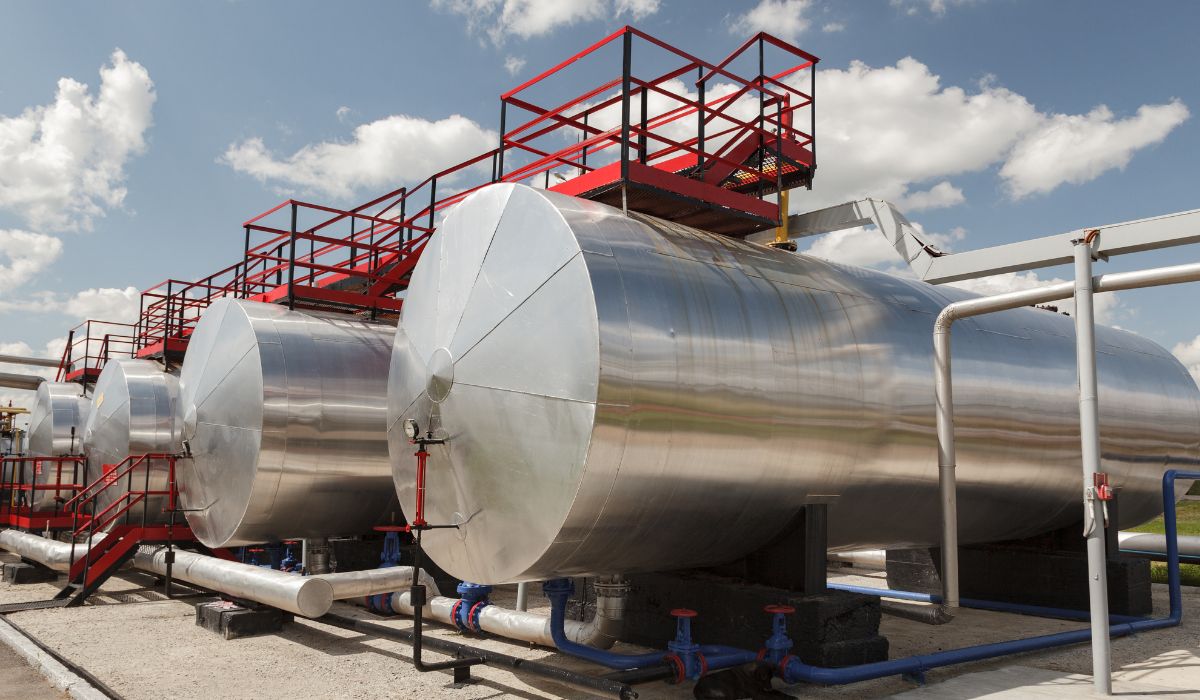
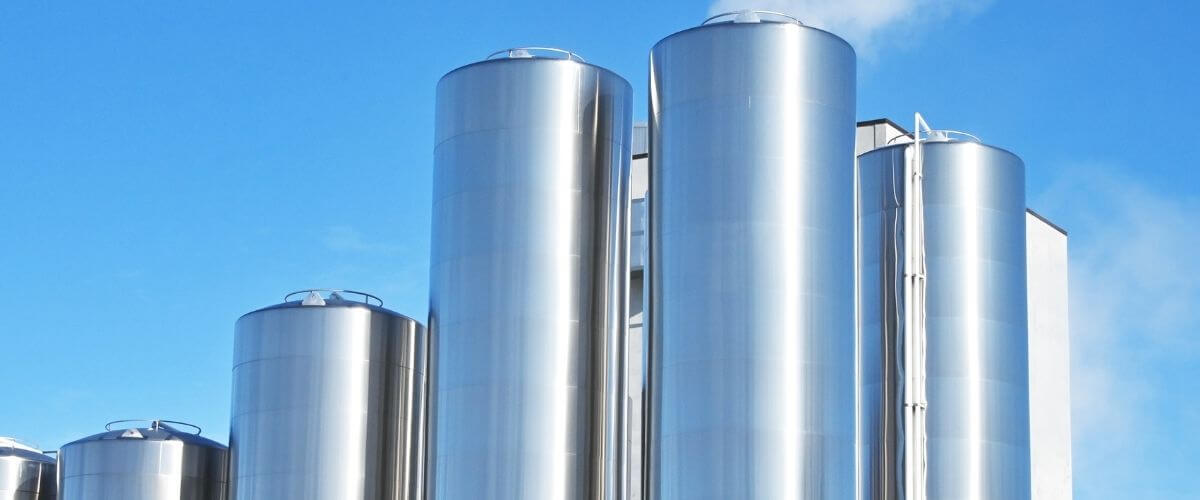
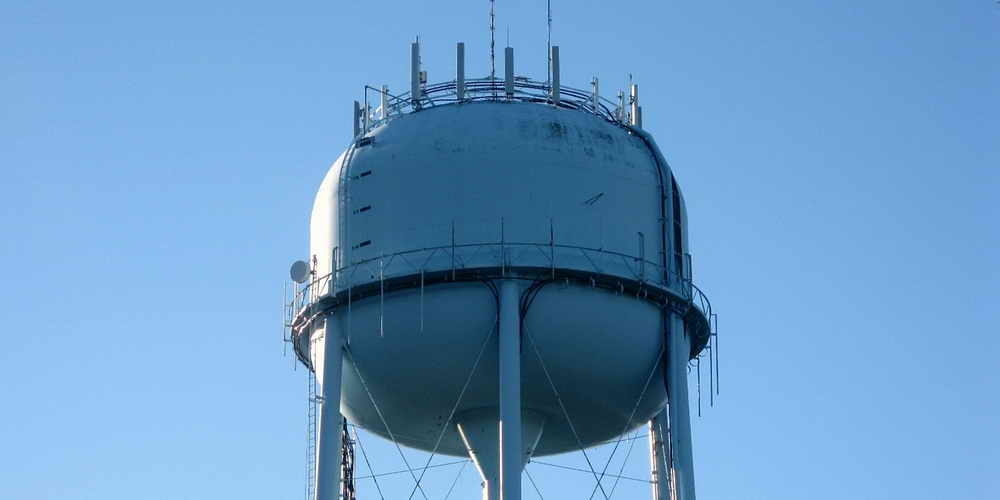
Leave A Comment